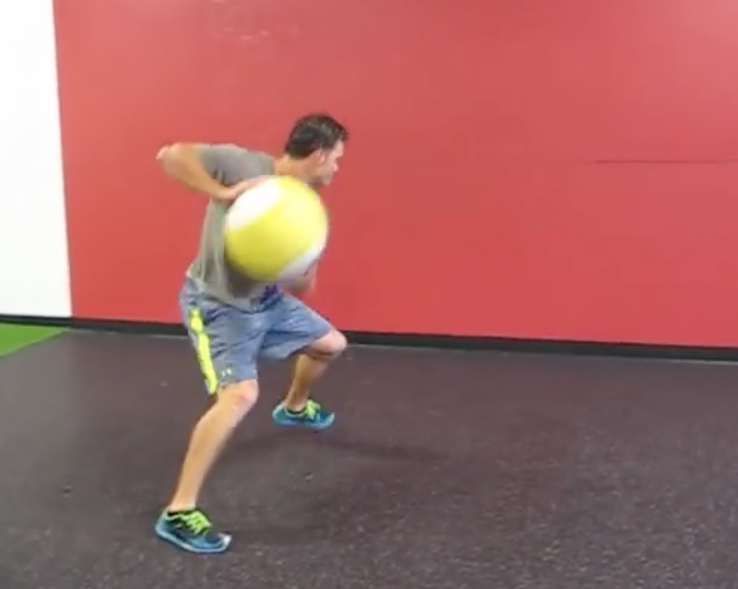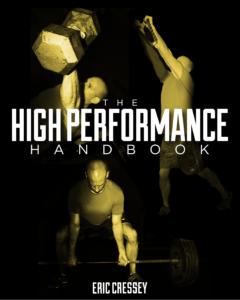
10 Ways to Remain Athletic as You Age
Back in my early-to-mid-20s, my focus shifted into powerlifting and away from a “traditional” athletic career. While I got a ton stronger, I can’t say that I felt any more athletic. In hindsight, I realize that it was because I trained strength at the exclusion of many other important athletic qualities. Since then, I’ve gone out of my way to include things that I know keep me athletic, and as a result, into the latter half of my 30s, I feel really good about taking on anything life throws my way. With that in mind, I thought I’d pull together some recommendations for those looking to remain athletic as they age.
1. Stay on top of your soft tissue work and mobility drills.
Without a doubt, the most common reason folks feel unathletic is that they aren’t able to get into the positions/postures they want. As I’ve written in the past, it’s much easier to do a little work to preserve mobility than it is to lose it and have to work to get it back. Some foam rolling and five minutes of mobility work per day goes a long way in keeping you athletic.
2. Do a small amount of pre-training plyos.
I think it’s important to preserve the ability to effectively use the stretch-shortening cycle (SSC). That’s not to say that every gym goer needs to be doing crazy depth jumps and sprinting full-tilt, though. A better bet for many folks who worry about tweaking an Achilles, patellar tendon, or hamstrings is to implement some low-level plyometric work: side shuffles, skipping, carioca, and backpedaling. Here’s a slightly more advanced progression we use in The High Performance Handbook program:
The best bet is to include these drills right after the warm-up and before starting up with lifting.
3. Emphasize full-body exercises that teach transfer of force from the lower body to the upper body.
I love cable lift variations to accomplish this task in core exercises, but push presses, landmine presses, and rotational rows are also great options.
4. Emphasize ground-to-standing transitions.
Turkish Get-ups are the most well-known example of this challenge, but don’t forget this gem:
5. Get strong in single-leg.
Squats and deadlifts will get you strong, no doubt, but don’t forget that a big chunk of athletics at all levels takes place in single-leg stance. Lunges, 1-leg RDLs, step-ups, and split squats all deserve a place in just about everyone’s training programs.
6. Use core exercises that force you to resist both extension and rotation.
Efficient movement is all about moving in the right places. The lower back isn’t really the place to move, though; you should prioritize movement at the hips and upper back. With that in mind, your core work should be focused on resisting both extension (too much lower back arching) and rotation. Here are a few favorites:
7. Train outside the sagittal plane.
It’s important to master the sagittal (straight ahead) plane first with your training programs, but once you get proficient there, it’s useful to progress to a bit of strength work in the frontal place. I love lateral lunge variations for this reason.
8. Chuck medicine balls!
I’m a huge fan of medicine ball drills with our athletes, but a lot of people might not know that I absolutely love them for our “general population” clients as well. I speak to why in this article: Medicine Ball Workouts: Not Just for Athletes. Twice a week, try adding in four sets at the end of your warm-up and prior to lifting. Do two sets of overhead stomps and two sets of a rotational drill, starting with these two variations in month 1:
In month 2, try these two:
Trust me; you’ll be hooked by the “8-week Magic Mark.”
9. Be fast on your concentric.
If you want to stay fast, you need to keep a fast element in your strength training program. This can obviously entail including things like Olympic lifts, jump squats, and kettlebell swings. Taking it a step further, though, you can always just make a dedicated effort to always accelerate the bar with good speed on the concentric (lifting) portion of the movement.
10. Play.
In a given week, on top of my normal lifting, I might catch bullpens, sprint or condition with my athletes, play beach volleyball, or run a few football receiving routes at the facility. The old adage, “Variety is the spice of life” applies to fitness and athleticism, too. Don’t be afraid to have some fun.
The longer you’ve been training, the more you realize that your strength and conditioning programs have to be versatile enough to preserve your athleticism and functional capacity while still keeping training fun. If you’re looking for a flexible program that’s proven effective across several populations, I’d encourage you to check out my flagship resource, The High Performance Handbook.


